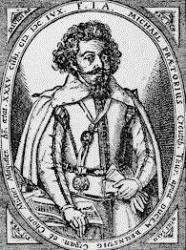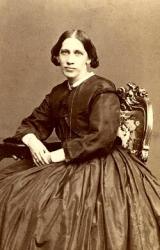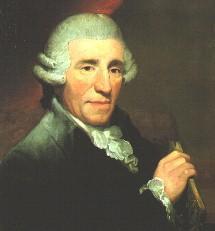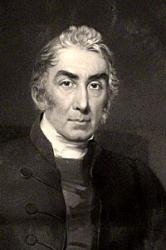Planning worship?
Check out our sister site, ZeteoSearch.org,
for 20+ additional resources related to your search.
- |
User Links
Person Results
Johann Rosenmüller
1619 - 1684 Person Name: Johann Rosenmüller Topics: Second Sunday after Easter; Third Sunday after Trinity; Ninth Sunday after Trinity; Christian Life and Hope The Walk of Godliness: Christian Resolve and Holiness; Christian Life and Hope The Walk of Godliness: Christian Resolve and Holiness Composer of "CALVARY (Macht dich, mein geist, bereit)" in Evangelical Lutheran hymnal Johann Rosenmueller, b. about 1615, Kursachsen; d. 1686, Wolfenbuettel
Evangelical Lutheran Hymnal, 1908
Johann Rosenmüller
Benjamin Praetorius

1636 - 1674 Person Name: Benj. Prætorius Topics: Second Sunday after Trinity Sunday; Second Sunday after Trinity Sunday Author of "Vær i Korset tro og stille" in Salmebog for Lutherske Kristne i Amerika Prätorius, Benjamin, son of Andreas Prätorius, pastor at Obergreieslau near Weissenfels in Saxony, was born at Obergreisslau, January 1, 1636. In 1637. his father was appointed pastor at Gross-Lissa near Delitzsch, in Saxony. Benjamin became a student of theology, and giaduated M.A., probably at Leipzig. In the entry of his marriage in the registers of Gross-Lista, for 1657, he is described as "regularly ordained substitute and future successor of this parish": and he is never described in the registers except as Pastor-substitute. His ninth child was born in 1671, and on Jan. 8, 1675, his son Andreas Benjamin, on acting as godfather, is described as “surviving son" of M. Benjamin Prätorius. It is probable that he died some time in 1674, but as the register of deaths of this period is lost, we are unable to fix the exact date (K. Goedeke's Grundriss, vol. iii., 1887, p. 176; manuscript from Pastor Moebius of Gross-Lissa, &c).
According to Wetzel, ii., 314, he was crowned as a poet on Feb. 15, 1661. In the registers for 1663 he first designs himself "poëta Caes." and "Kais. gekrönter Poëta" (i.e. imperial crowned poet), and in 1670 as "poëta Caes. laur. coronatus." His hymns appeared in his (1) Jauchtzendes Libanon, Leipzig, 1659, and (2) Spielende Myrten-Aue, Leipzig, 1663. In the preface to the latter he signs himself as "C. P. Caes. und Diener am Wort daselbst" (minister of the Word), under date “Gross-Lissa, Dec. 24, 1663."
The only hymn by him translated into English is:—
Sei getreu bis an das Ende. The Reward of the Faithful. In 1659, as above, No. 64, p. 15?, in 9 stanzas of 8 lines, and founded on Rev. ii. 10. In full in the Unverfälschter Liedersegen, 1851, No. 339. It is also often found as "Sei getreu in deinem Leiden," as in the Berlin Geistliche Lieder, ed. 1863, No. 749. This is from Luppius' sGesang-Buch, Wesel, 1692, p. 22, where it is in 7 stanzas (iv., ii., iii., v., ix., i. and a new stanza which begins, "So wohlan, so will ich leiden"), and is erroneously ascribed to J. C. Schade. The original form is tr. as:—
Be thou faithful to the end, Let not. By Miss Warner, in her Hymns of the Church Militant, 1858, p. 362, repeated as No. 255, in Bishop Ryle's Collection, 1860. [Rev. James Mearns, M.A.]
--John Julian, Dictionary of Hymnology (1907)
Benjamin Praetorius
Carolina Sandell

1823 - 1903 Person Name: Lina Berg, f. Sandell Topics: Second Sunday after Trinity Sunday Author of "Den Port er snever, trang den Sti" in Salmebog for Lutherske Kristne i Amerika Caroline W. Sandell Berg (b. Froderyd, Sweden, 1832; d. Stockholm, Sweden, 1903), is better known as Lina Sandell, the "Fanny Crosby of Sweden."
"Lina" Wilhelmina Sandell Berg was the daughter of a Lutheran pastor to whom she was very close; she wrote hymns partly to cope with the fact that she witnessed his tragic death by drowning. Many of her 650 hymns were used in the revival services of Carl O. Rosenius, and a number of them gained popularity particularly because of the musical settings written by gospel singer Oskar Ahnfelt. Jenny Lind, the famous Swedish soprano, underwrote the cost of publishing a collection of Ahnfelt's music, Andeliga Sänger (1850), which consisted mainly of Berg's hymn texts.
Bert Polman
Carolina Sandell
Kaspar Stolzhagen
1550 - 1594 Person Name: K. Stolshagius Topics: Twenty-second Sunday after Trinity Sunday Evening Translator of "Trofaste Herre Jesu Krist" in M. B. Landstads Kirkesalmebog og "Nokre Salmar" ved Professor Dr. E. Blix, samt følgende tillæg
Kaspar Stolzhagen
Søren Jonassøn
Person Name: S. Jonassøn Topics: Twenty-second Sunday after Trinity Sunday For Evening Author of "Den Idræt Gud er tækkelig" in M. B. Landstads Kirkesalmebog og "Nokre Salmar" ved Professor Dr. E. Blix, samt følgende tillæg
Søren Jonassøn
James John Cummins
1795 - 1867 Person Name: James J. Cummins Topics: Worship General Petitions; Sexagesima Sunday; Sundays in Lent; Lent, Second Sunday; Easter Season, Sixth Sunday; Eleventh Sunday after Trinity; Nineteenth Sunday after Trinity Author of "Jesus, Lord of life and glory" in Church Book Cummins, James John, son of a merchant in Cork, Ireland, was born in Cork, May 5, 1795. In 1834 he removed to London, and was for many years a Director of the Union Bank of Australia. He died at Wildecroft, Buckland, Surrey, Nov. 23, 1867. He devoted much time to the study of Hebrew and Theology. He prepared for the use of his children in their preparation for Confirmation, Seals of the Covenant Opened in the Sacraments. This work, including several hymns and poems, was published in 1839. The hymns and other poetical pieces were also published in 1839 as Poetical Meditations and Hymns by the Author of The Seals of the Covenant Opened. In 1849 this work was republished with additions as Hymns, Meditations, and other Poems. The title on the cover of this work is Lyra Evangelica, and by this title it is usually known. The hymns, "Jesus, Lord of life and glory," 1839, (A Litany); "Shall hymns of grateful love," 1839, (The New Song), and others are from this work.
-- John Julian, Dictionary of Hymnology (1907)
==================
Cummins, James John, p. 273, i. This author’s hymn, "Jesus, Lord of life and glory," is given in a few hymnals as, "Jesus, Lord, we kneel before Thee."
--John Julian, Dictionary of Hymnology, Appendix, Part II (1907)
James John Cummins
Joseph Haydn

1732 - 1809 Person Name: Francis Joseph Haydn, 1732-1809 Topics: Second Sunday after Trinity Composer of "ST. EDMUNDS" in Evangelical Lutheran hymnal Franz Joseph Haydn (b. Rohrau, Austria, 1732; d. Vienna, Austria, 1809) Haydn's life was relatively uneventful, but his artistic legacy was truly astounding. He began his musical career as a choirboy in St. Stephen's Cathedral, Vienna, spent some years in that city making a precarious living as a music teacher and composer, and then served as music director for the Esterhazy family from 1761 to 1790. Haydn became a most productive and widely respected composer of symphonies, chamber music, and piano sonatas. In his retirement years he took two extended tours to England, which resulted in his "London" symphonies and (because of G. F. Handel's influence) in oratorios. Haydn's church music includes six great Masses and a few original hymn tunes. Hymnal editors have also arranged hymn tunes from various themes in Haydn's music.
Bert Polman
Joseph Haydn
H. A. Timm
1800 - 1866 Person Name: Herman Timm Topics: Second Sunday after Easter; Second Sunday in Lent; Second Sunday after Easter; Første Pinsedag Til Morgengudstjeneste og Høimesse - Til Sekund Tekstrækkes Evangelium; Pentecost; Pentecost; Eighteenth Sunday after Trinity Sunday; Hengivelse til Jesus; Devotion to Jesus; Jesus, vort alt; Jesus, Our All; Jesus, vor Ven; Jesus, Our Friend; Anden Pinsedag Til Høimesse -Til Tredje Teksxtækkes Evangelium; Anden Søndag efter Paaske Til Aftengudstjeneste - Til Tredje Tekstrækkes Epistel; Anden Søndag I Faste Til Høimesse -Til Anden Tekstrækkes Evangelium; Åttende Søndag efter Trefoldiheds Fest Til Høimesse -Til Anden Tekstrækkes Evangelium; Anden Søndag efter Paaske Til Høimesse Author of "Bliv hos mig, kjære Herre Krist!" in Salmebog for Lutherske Kristne i Amerika Herman Andreas Timm born 28 October 1800. Death 4 november 1866 in Magleby on Amager, where he served as a priest. Psalm Author represented in the Danish Psalmebog for Kirke go Hjem.
https://sv.wikipedia.org/wiki/Herman_Andreas_Timm
H. A. Timm
Stephen Jenks
1772 - 1856 Topics: Second Sunday after Easter; Third Sunday after Trinity; Ninth Sunday after Trinity; Christian Life and Hope The Walk of Godliness: Christian Resolve and Holiness; Christian Life and Hope The Walk of Godliness: Christian Resolve and Holiness Arranger of "CALVARY (Macht dich, mein geist, bereit)" in Evangelical Lutheran hymnal Born: March 17, 1772, Glocester, Rhode Island.
Died: June 3, 1856, Thompson, Ohio.
Buried: Maple Grove Cemetery, Thompson, Ohio.
During his life, Jenks moved from town to town, living in Ridgefield and New Canaan, Connecticut; Pound Ridge, New York; and Providence, Rhode Island; finally settling in Thompson, Ohio, in 1829. After moving to Ohio, he became a farmer and a maker of percussion instruments. His works include:
The New-England Harmonist (Danbury, Connecticut, 1799)
The Musical Harmonist (New Haven, Connecticut, 1800.
The American Compiler, with Elijah Griswold (Northampton, Massachusetts, 1803)
The Delights of Harmony (New Haven, Connecticut, 1804)
The Delights of Harmony; or, Norfolk Compiler (Dedham, Massachusetts: 1805)
Additional Music, to the Delights of Harmony
The Delights of Harmony; or, Union Compiler, 1806
The Jovial Songster (Dedham, Massachusetts: 1806)
The Hartford Collection of Sacred Harmony, with Elijah Griswold and John C. Frisbie (Hartford, Connecticut: 1807)
The Royal Harmony of Zion (Dedham, Massachusetts: 1810)
The Christian Harmony (Dedham, Massachusetts: 1811)
The Harmony of Zion; or, Union Compiler (Dedham, Massachusetts: 1811)
The Whistle (Dedham, Massachusetts: 1811)
--www.hymntime.com/tch
Stephen Jenks
Henry Hart Milman

1791 - 1868 Topics: The Christian Life Trust; Epiphany, Fourth Sunday; Lent, First Sunday; Lent, Second Sunday; Twenty First Sunday after Trinity Author of "O Help us, Lord! each hour of need" in Church Book Milman, Henry Hart, D.D., the youngest son of Sir Francis Milman (who received his Baronetage as an eminent Court physician), was born Feb. 10th, 1791, and educated at Dr. Burney's at Greenwich, and subsequently at Eton. His career at B. N. C. Oxford, was brilliant. He took a first class in classics, and carried off the Newdigate, Latin Verse, Latin Essay, and English Essay. His Newdigate on the Apollo Belvedere, 1812, is styled by Dean Stanley "the most perfect of Oxford prize poems." His literary career for several years promised to be poetical. His tragedy Fazio was played at Covent Garden, Miss O'Neill acting Bianca. Samor was written in the year of his appointment to St. Mary's, Reading (1817); The Fall of Jerusalem (1820); Belshazzar and The Martyr of Antioch (1822), and Anne Boleyn, gained a brilliant reception from the reviewers and the public. He was appointed Poetry Professor at Oxford in 1821, and was succeeded ten years after by Keble. It must have been before 1823, the date of Heber's consecration to Calcutta, that the 13 hymns he contributed to Heber's Hymns were composed. But his poetry was only the prelude to his larger work.
The Bampton Lectures (1827) mark his transition to theological study, and the future direction of it was permanently fixed by his History of the Jews (1829). This book raised a storm of obloquy. It was denounced from the University pulpit, and in the British Critic. "It was the first decisive inroad of German theology into England, the first palpable indication that the Bible could be studied like another book, that the characters and events of the sacred history could be treated at once critically and reverently" (Dean Stanley).
In 1835 he was presented by Sir Robert Peel to a Canonry at Westminster and the Rectory of St. Margaret's. In 1839 appeared his valuable edition of Gibbon's Decline and Fall; and in 1840 his History of Christianity to the Abolition of Paganism in the Roman Empire. Among his minor works in a different field were his Life of Keats and his edition and Life of Horace. It was not till 1854 that his greatest work—-for "vast and varied learning, indefatigable industry, calm impartiality, and subtle and acute criticism, among the most memorable in our language" (Quart Rev.)—-Latin Christianity—-appeared. He had been appointed Dean of St. Paul's in 1849. The great services under the dome originated in his tenure of the Deanery. His latest work, published after his death, Sept. 24, 1868, was The Annals of St. Paul’s. Though one of the most illustrious in the school of English liberal theology, he had no sympathy with the extreme speculations of Germany. The "criticism" of Tübingen "will rarely bear criticism." He "should like an Ewald to criticise Ewald." "Christianity will survive the criticism of Dr. Strauss," and the "bright flashing artillery" of Rénan. His historical style has been compared to Gibbon in its use of epigram and antithesis. His narrative is full of rapidity of movement. His long complex paragraphs have often a splendour of imagination as well as wealth of thought. All the varied powers of his mind found vent in his conversation; he was called, after his death, "the last of the great converters." The catalogue of his friends from the days of Heber, "his early friend," to those of Hallam, Macaulay, and Dean Stanley, was long and distinguished.
Milman's 13 hymns were published in Heber's posthumous Hymns in 1827, and subsequently in his own Selection of Psalms & Hymns, 1837. The fine hymn for The Burial of the Dead, in Thring's Collection, "Brother, thou art gone before us," is from The Martyr of Antioch (1822). Like Heber's, they aim at higher literary expression and lyric grace. He makes free use of refrains. The structure is often excellent. His style is less florid and fuller of burning, sometimes lurid force than Heber's. His hymn for the 16th Sunday after Trinity, "When our heads are bowed with woe," has no peer in its presentation of Christ's human sympathy; the hymn for the 2nd Sunday in Lent, “Oh! help us, Lord! each hour of need," is a piece of pure deep devotion. "Ride on, ride on in majesty," the hymn for Palm Sunday, is one of our best hymns. And the stanzas for Good Friday, "Bound upon the accursed tree," form one of the finest meditations on the Passion. All his hymns are still in common use. [Rev.H.Leigh Bennett, M.A.]
--John Julian, Dictionary of Hymnology (1907)
Henry Hart Milman


 My Starred Hymns
My Starred Hymns


